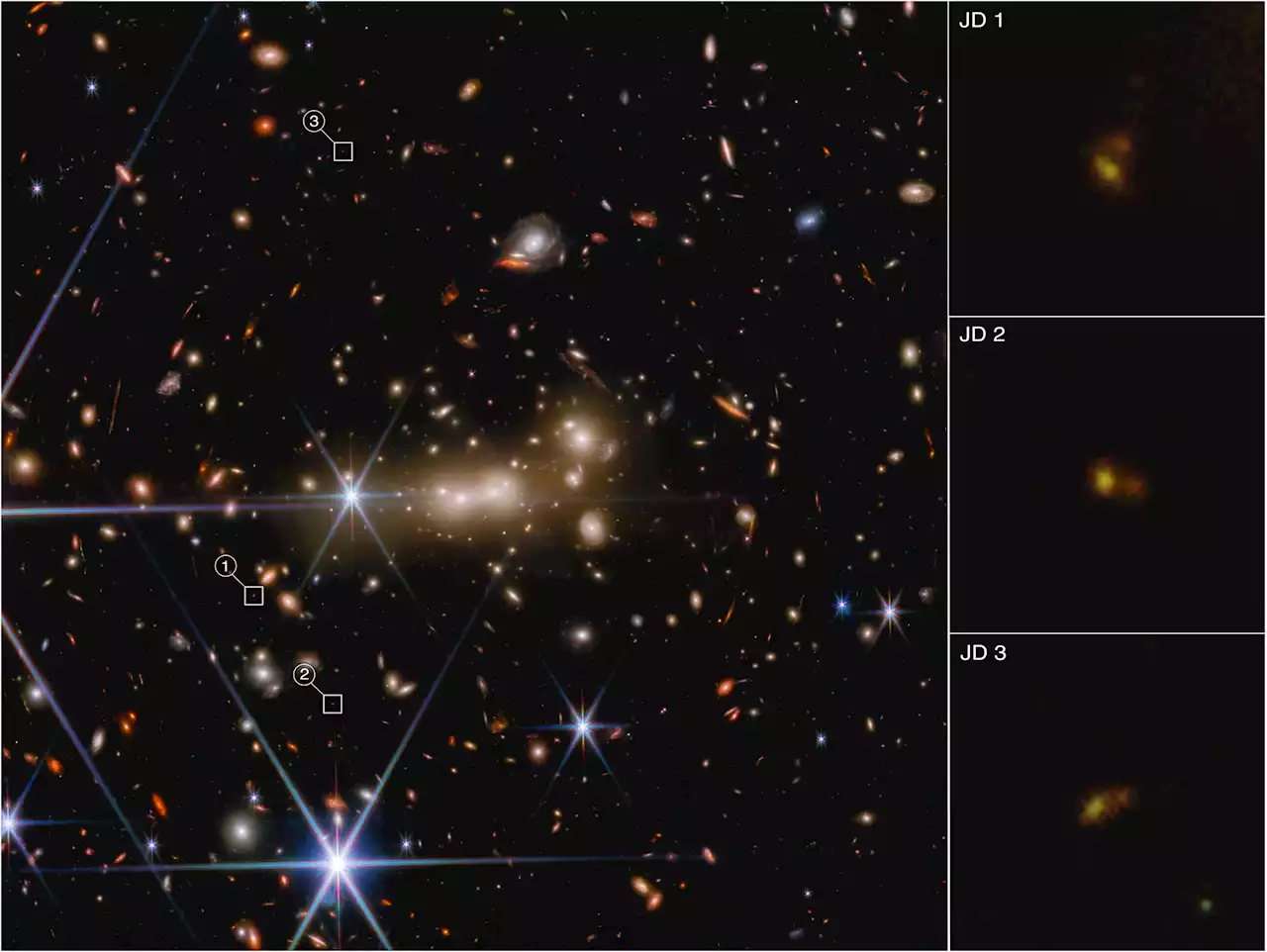NASA’s James Webb Space Telescope was specially designed to detect the faint infrared light from very distant galaxies and give astronomers a glimpse at the early universe. The nature of galaxies during this early period of our universe is not well known nor understood. However, with the help of gra
. At the time, I’d never worked on high redshift galaxies, and then I found this one that was potentially the most distant at redshift 11, about 97 percent of the way back to the big bang. With Hubble, it was just this pale, red dot. We could tell it was really small, just a tiny galaxy in the first 400 million years of the universe. Now we look with Webb, and we’re able to resolve TWO objects! We’re actively discussing whether these are two galaxies or two clumps of stars within a galaxy.
It’s really interesting that we see two structures in such a small system. We might be witnessing a galaxy merger in the very early universe. If this is the most distant merger, I will be really ecstatic!: Due to the gravitational lensing of the massive galaxy cluster MACS0647, it’s lensed into three images: JD1, JD2, and JD3. They’re magnified by factors of eight, five, and two, respectively.: Up to this point, we haven’t really been able to study galaxies in the early universe in great detail.
I think my favorite part is, for so many new Webb image we get, if you look in the background, there are all these little dots—and those are all galaxies! Every single one of them. It’s amazing the amount of information that we’re getting that we just weren’t able to see before. And this is not a deep field. This is not a long exposure. We haven’t even really tried to use this telescope to look at one spot for a long time.
This is a comparison between the Hubble Space Telescope images of MACS0647-JD from 2012 and the 2022 images from the James Webb Space Telescope . Note that MACS0647-JD appears as a faint, red dot in the Hubble image, but Webb reveals much more detail. Download the full-resolution version from the Space Telescope Science Institute.
Reference: “JWST reveals a possible z∼11 galaxy merger in triply-lensed MACS0647−JD” by Tiger Yu-Yang Hsiao, Dan Coe, Abdurro’uf, Lily Whitler, Intae Jung, Gourav Khullar, Ashish Kumar Meena, Pratika Dayal, Kirk S. S. Barrow, Lillian Santos-Olmsted, Adam Casselman, Eros Vanzella, Mario Nonino, Yolanda Jimenez-Teja, Masamune Oguri, Daniel P. Stark, Lukas J. Furtak, Adi Zitrin, Angela Adamo, Gabriel Brammer, Larry Bradley, Jose M. Diego, Erik Zackrisson, Steven L. Finkelstein, Rogier A.
Argentina Últimas Noticias, Argentina Titulares
Similar News:También puedes leer noticias similares a ésta que hemos recopilado de otras fuentes de noticias.
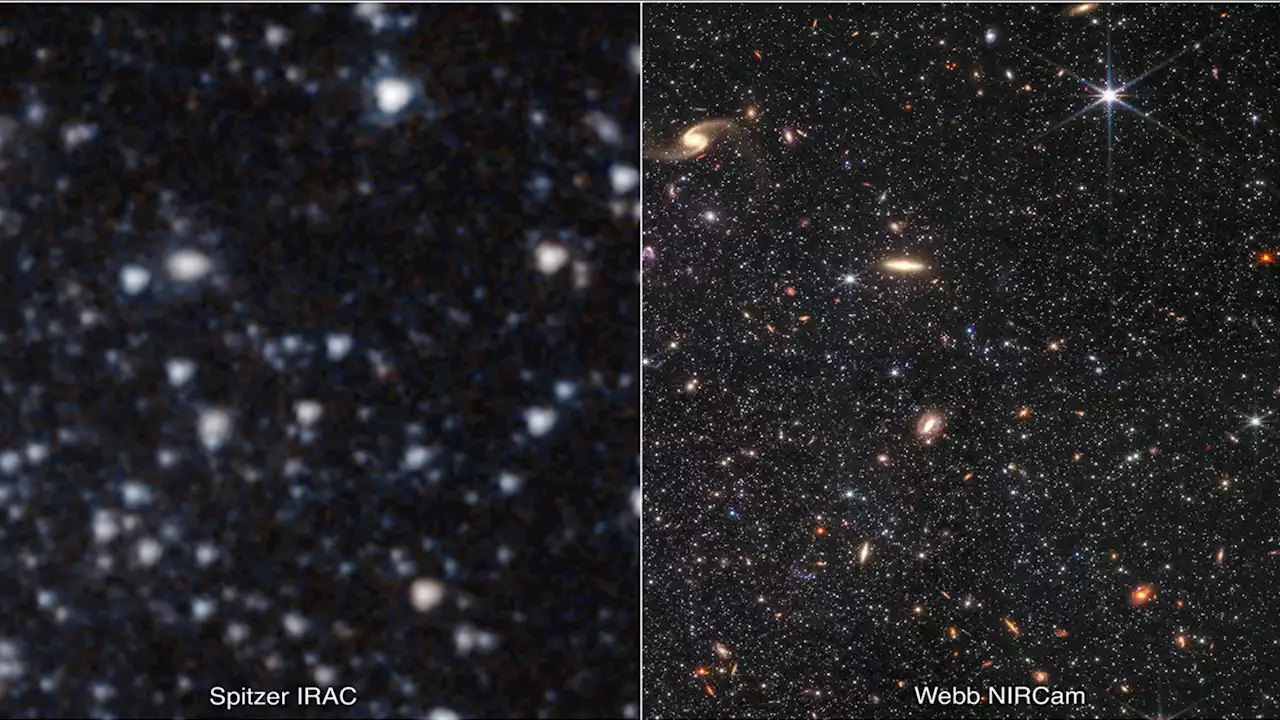 New James Webb Space Telescope image shows 'lonely' dwarf galaxy in striking detailThe image shows a panoply of stars within a lonely dwarf galaxy called Wolf - Lundmark - Melotte, which lies about 3 million light-years from our home galaxy, the Milky Way, and is about one-tenth the size.
New James Webb Space Telescope image shows 'lonely' dwarf galaxy in striking detailThe image shows a panoply of stars within a lonely dwarf galaxy called Wolf - Lundmark - Melotte, which lies about 3 million light-years from our home galaxy, the Milky Way, and is about one-tenth the size.
Leer más »
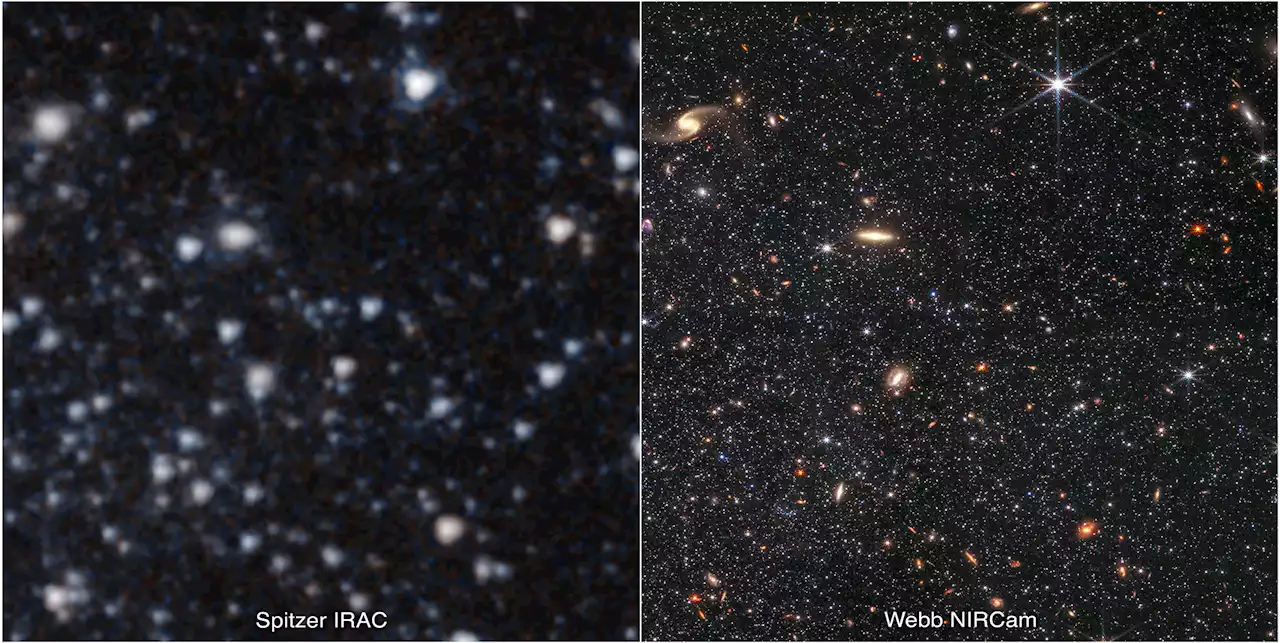 New James Webb Space Telescope image shows a secluded galaxy in stellar detailThe lonely dwarf galaxy could teach scientists about the early eras of our own Milky Way.
New James Webb Space Telescope image shows a secluded galaxy in stellar detailThe lonely dwarf galaxy could teach scientists about the early eras of our own Milky Way.
Leer más »
 James Webb Space Telescope peers into lonely dwarf galaxy with sparkling resultsAt 3 million light-years from Earth, the isolated dwarf galaxy Wolf–Lundmark–Melotte has remained unchanged by interactions with other galaxies.
James Webb Space Telescope peers into lonely dwarf galaxy with sparkling resultsAt 3 million light-years from Earth, the isolated dwarf galaxy Wolf–Lundmark–Melotte has remained unchanged by interactions with other galaxies.
Leer más »
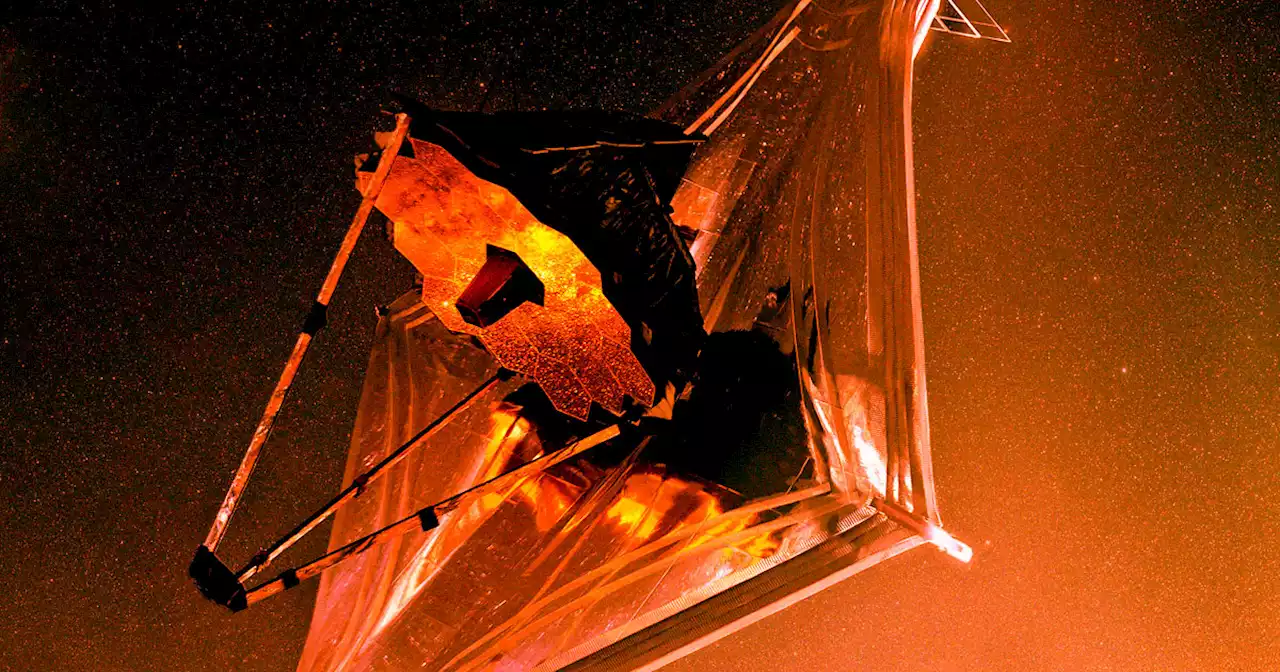 NASA Fixes Months-Long Issue With James Webb TelescopeOne of the James Webb Space Telescope's most important instruments had been offline for months — but it's now been brought back to full functionality.
NASA Fixes Months-Long Issue With James Webb TelescopeOne of the James Webb Space Telescope's most important instruments had been offline for months — but it's now been brought back to full functionality.
Leer más »
 Dazzling dwarf galaxy photo shows how incredible the Webb telescope truly isThe James Webb space telescope recently captured an image of a nearby dwarf galaxy, showcasing the capabilities it brings to the table.
Dazzling dwarf galaxy photo shows how incredible the Webb telescope truly isThe James Webb space telescope recently captured an image of a nearby dwarf galaxy, showcasing the capabilities it brings to the table.
Leer más »
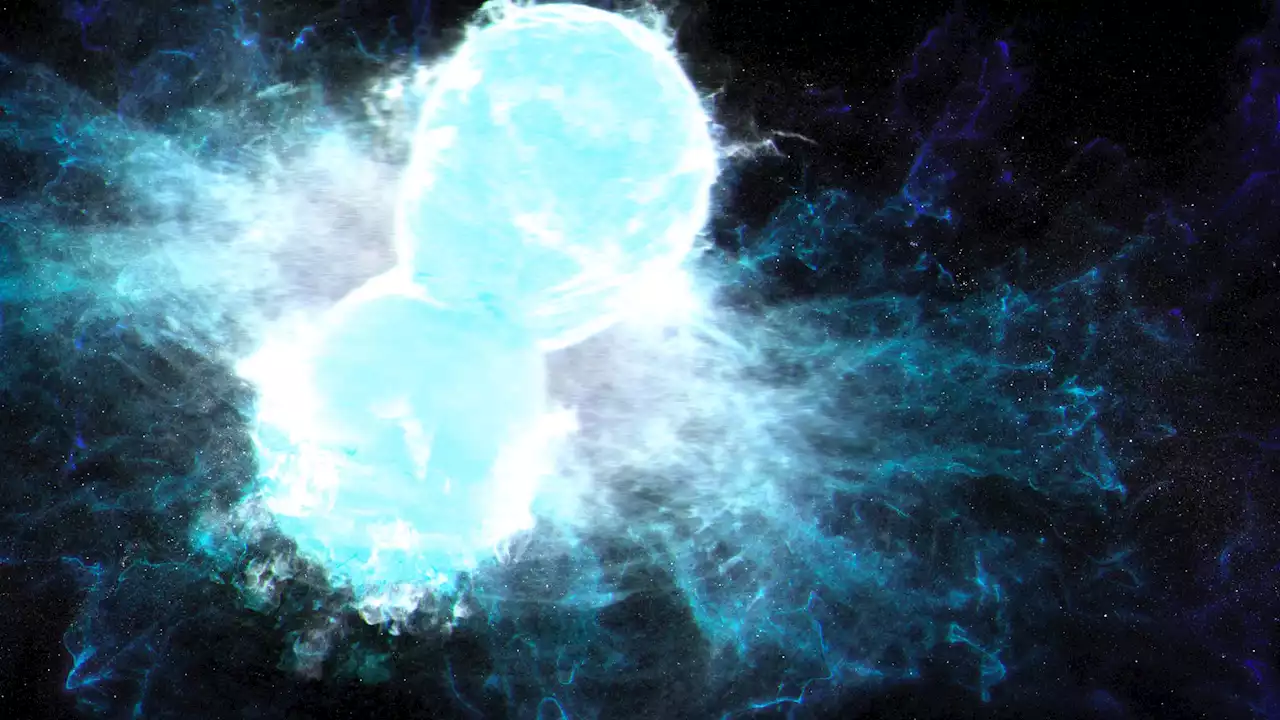 How NASA’s Roman Space Telescope Will Scan for Showstopping Kilonovae ExplosionsNASA’s Roman Space Telescope is set to help researchers detect more kilonovae, helping us learn significantly more about these “all-star” smashups. How do you pinpoint titanic collisions that occur millions or even billions of light-years away? First, by surveying large areas of the sky. Second,
How NASA’s Roman Space Telescope Will Scan for Showstopping Kilonovae ExplosionsNASA’s Roman Space Telescope is set to help researchers detect more kilonovae, helping us learn significantly more about these “all-star” smashups. How do you pinpoint titanic collisions that occur millions or even billions of light-years away? First, by surveying large areas of the sky. Second,
Leer más »
